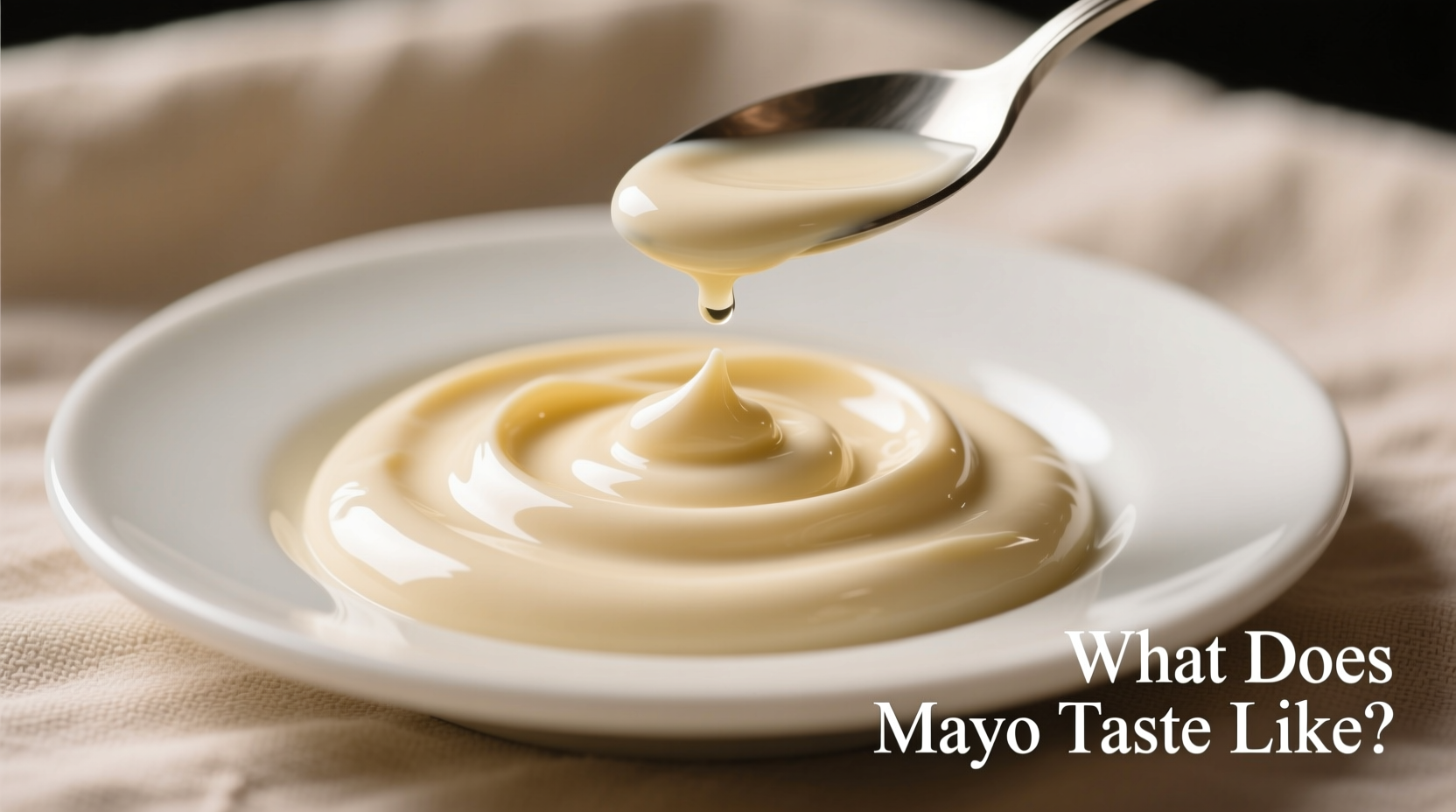The Essential Taste Profile of Mayonnaise
When you take your first bite of classic mayonnaise, you'll immediately notice its luxurious creaminess—a direct result of the emulsion process that binds oil and egg yolks. This foundational condiment offers a sophisticated balance rather than a single dominant flavor. The tanginess from vinegar or lemon juice cuts through the richness, while the egg yolks contribute a subtle earthiness. A well-made mayo shouldn't taste overwhelmingly of eggs; instead, they provide structure and depth.
Professional chefs describe premium mayonnaise as having "a clean finish"—meaning it enhances other ingredients without leaving an unpleasant aftertaste. The salt level is crucial; too little makes mayo bland, while too much overwhelms the delicate balance. When properly seasoned, mayo acts as a flavor amplifier in sandwiches and salads, binding ingredients while contributing its own nuanced profile.
How Ingredients Shape Mayonnaise's Flavor
The specific taste of mayonnaise depends heavily on its ingredient composition. Traditional French-style mayo uses only egg yolks, while American commercial versions often include whole eggs. The type of oil dramatically affects flavor—avocado oil creates a grassier note, while neutral canola oil keeps the profile clean. Artisanal producers might use extra-virgin olive oil, which imparts a distinctive fruity bitterness that some palates find too pronounced.
Acid selection matters significantly. Lemon juice provides brighter, fresher acidity compared to distilled vinegar's sharper tang. Some specialty mayos incorporate additional elements like garlic (aioli), smoked paprika, or herbs, but these represent flavor variations rather than traditional mayo's baseline profile.
| Mayo Type | Primary Flavor Notes | Texture Characteristics | Best Culinary Uses |
|---|---|---|---|
| Traditional French | Delicate egg richness, subtle tang | Thick, velvety, luxurious mouthfeel | Fish dishes, vegetable dips, sauces |
| Commercial American | Milder, slightly sweetened profile | Smooth but less complex body | Sandwiches, burgers, quick salads |
| Light/Low-Fat | Watery, sometimes metallic aftertaste | Thin, sometimes grainy texture | Limited applications due to instability |
| Homemade Artisanal | Bright acidity, pronounced oil character | Rich but potentially variable consistency | Specialty dishes where flavor matters most |
Understanding Regional Variations in Flavor
Mayonnaise isn't a one-size-fits-all condiment—the flavor profile varies significantly across regions. French and European preparations typically feature higher egg yolk content and premium oils, resulting in richer, more complex flavors. American commercial mayos often include sugar or sweeteners to broaden appeal, creating a slightly rounded profile that some traditionalists consider inauthentic.
Food historians note that mayonnaise's evolution reflects changing consumer preferences. According to research from the International Food History Association, early 20th century American mayo contained no sugar, but manufacturers began adding sweeteners during the 1950s to appeal to broader palates. This subtle shift explains why some people perceive mayo as having a barely perceptible sweetness.
Why Some People Dislike Mayonnaise
Sensory research from Cornell University's Department of Food Science reveals that approximately 17% of people have a strong aversion to mayonnaise, often citing "slimy" texture or "eggy" taste as primary reasons. This dislike frequently stems from exposure to low-quality commercial products with unstable emulsions or artificial additives.
Culinary professionals explain that properly made mayonnaise shouldn't have a strong eggy flavor—the eggs serve as emulsifiers rather than primary flavor components. When prepared correctly, the egg contribution remains subtle, allowing the balanced interplay of fat, acid, and salt to shine through. Many who claim to dislike mayo actually enjoy aioli or other flavored variations that mask the base flavor they find objectionable.
How Mayonnaise Functions in Culinary Applications
Understanding mayo's flavor profile helps explain its culinary versatility. Its emulsified structure allows it to carry and distribute flavors effectively throughout dishes. In tuna or chicken salad, mayo doesn't dominate but rather creates a flavor bridge between ingredients. The fat content helps soluble flavors disperse evenly, while the acid component brightens heavier ingredients.
Chef Sophie Dubois notes: "Quality mayonnaise acts like a flavor conductor in a dish—it doesn't play the melody but ensures all the instruments sound harmonious together." This explains why substituting Greek yogurt or other alternatives often fails to deliver the same culinary results, as they lack mayo's unique flavor-carrying properties.
Common Misconceptions About Mayonnaise Flavor
Many people mistakenly believe mayonnaise tastes overwhelmingly of eggs or oil. In reality, properly prepared mayo achieves flavor equilibrium where no single component dominates. Another misconception suggests all mayos taste identical, yet blind taste tests reveal significant differences between brands and preparation methods.
Food science research shows that temperature affects perception—chilled mayo tastes less rich than room-temperature preparations. This explains why professional chefs often bring mayo to room temperature before incorporating it into dishes, allowing its full flavor profile to emerge.

Choosing Mayonnaise Based on Flavor Needs
Selecting the right mayo depends on your intended application. For delicate seafood dishes, a light French-style mayo with lemon juice provides subtle enhancement without overpowering. Heartier applications like potato salad benefit from American-style mayo's bolder presence. When making dressings or sauces, consider how the mayo's inherent flavor will interact with other ingredients—stronger olive oil-based mayos pair well with robust vegetables but might clash with mild proteins.
Home cooks seeking authentic flavor should consider making small batches with quality ingredients. As food writer Harold McGee explains in On Food and Cooking, "The freshness of ingredients directly impacts the resulting flavor—just-made mayo with farm-fresh eggs and good oil tastes dramatically different from commercial products."











 浙公网安备
33010002000092号
浙公网安备
33010002000092号 浙B2-20120091-4
浙B2-20120091-4